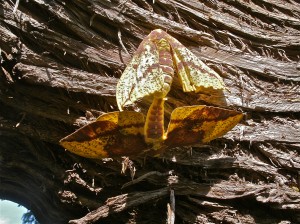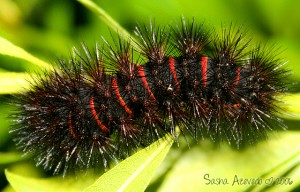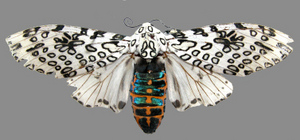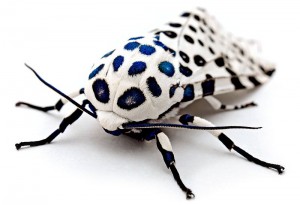June 10th: It’s a short drive from home to the site of the Captain William A. Fitzgerald USN, Recreation and Conservation Area in Brunswick, Maine. A few years ago the US Navy decamped from Brunswick, and this is one of the parcels of land that reverted to the town after more than 50 years of Navy use. It’s an open, rumpled landscape of sand and grass and brush, stippled with some pitch pines, and now is the time to help it toward the sand-grass plain it wants to be, naturally.
So five of us, working as the town’s Conservation Commission, arrived at the battered gate, took the old access road in and pulled up at the evening’s work – a clump of invasive knotweed. The weed, first brought to North America as an ornamental in the late 19th century, was well rooted, and, from its stand, clearly eyeing the acres of open ground around. We were doped for bugs and tick wary, and we had our cutters and loppers ready to have at the knotweed.
The setting – former naval base – the term “invasive, and our “attack” on it had cast my mind in a military set. As I reached a thumb-thick stalk of knotweed that rose to head height before me, Henry Thoreau flashed to mind. He too did battle with invasive weeds, though their invasion was not a trans-oceanic one. Still, as he labored among his beans during year one at Walden, he joined with the weeds that would crowd out his beans; he went at them with fervor:
A long war, not with cranes, but with weeds, those Trojans who had sun and rain and dews on their side. Daily the beans saw me come to their enemies, filling up the trenches with weedy dead. Many a lusty, crest-waving Hector, that towered a whole foot above his crowding comrades, fell before my weapon and rolled in the dust. -Walden
Ah, the mock heroic. And yet, in its dailiness, in its usualness, the real heroic too. This work of helping the land say, Beans, or, in our case, Grass, is part of the cultivation that forms culture, that, in the long run, helps us “to know beans.”
I sized up this knotty Hector and cut him down.
Well, all this metaphorical battling is a bit bloody for what we actually did, but just as Thoreau came “to know beans” through his close contact with them, we too came to know knotweed. And that brought me a little closer to knowing the variousness of this piece of land and what it might become. And I gained also a sense of knotweed’s tenacity and power. We may have leveled this stand, but clearly, the weed would be back for another round.
So too would we.







